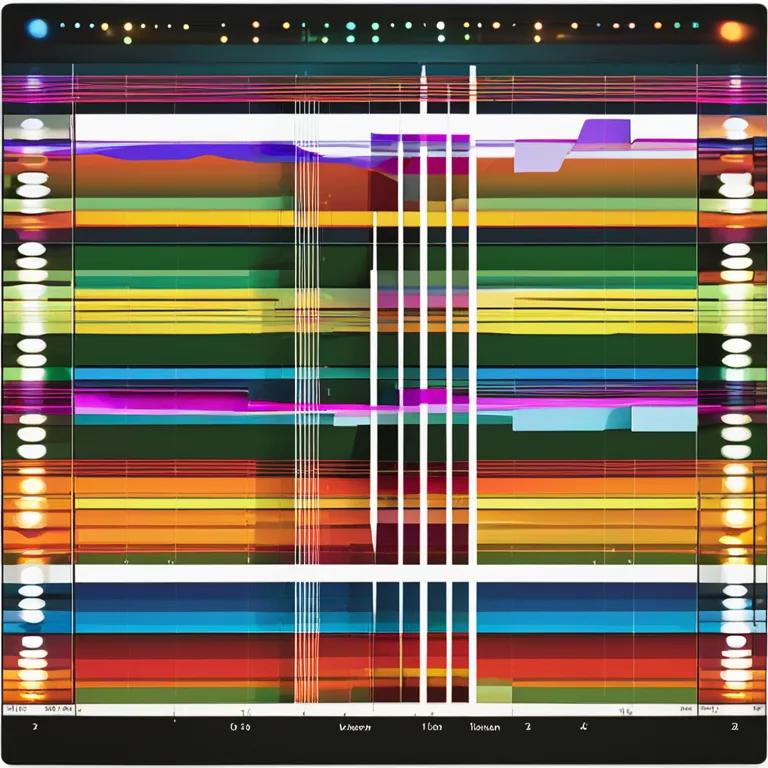
The Rhythms of Life: An Insight into Biorhythm Cycles
Discover the fascinating world of biorhythm cycles and how they may influence our daily well-being and personal achievements
article by Adrian Wallace
Introduction to Biorhythms
Biorhythms are often described as the invisible waves of energy that affect our daily lives. The concept originated in the late 19th century and gained substantial public interest in the 1970s. Biorhythm theory posits that from the moment of birth, three primary cycles—affecting physical, emotional, and intellectual well-being—start to ebb and flow. These cycles are believed to influence our performance, decision-making, and mood. As we navigate the complexities of modern life, some proponents suggest that tracking these cycles could offer a better understanding of personal patterns and potentials.

The Three Core Cycles
Traditionally, the three core cycles are defined as the Physical (23-day cycle), the Emotional (28-day cycle), and the Intellectual (33-day cycle). Each cycle is thought to oscillate between high and low phases, with a high phase indicating a period of strength or increased capacity in that area, and a low phase suggesting a time of rest or decreased ability. As the cycles are of different lengths, their interactions create a complex pattern that is unique to every individual and theoretically predicts times of heightened abilities or potential vulnerabilities.

Critical Days and Performance
Critical days occur when a biorhythm cycle crosses the zero point moving from a high to a low phase or vice versa. According to biorhythm theory, these transition points might make a person more prone to errors or accidents. For instance, athletes and performers may track their biorhythms and try to align important events or competitions with their high cycles for physical and mental advantages. Similarly, individuals might avoid making significant life decisions during their critical days to prevent misjudgment caused by adverse biorhythmic influences.

Biorhythm Calculations in the Digital Era
In the digital age, calculating and tracking biorhythm cycles has been simplified through the use of various apps and online tools. Users input their birth data and instantly receive their personal biorhythm charts. Some apps claim to use complex algorithms, including lunar cycles and astrological insights, to provide even more personalized reports. The technology and interfaces of these tools are in a constant state of evolution, making it increasingly accessible for individuals to explore their own rhythms in connection to their personal and professional lives.

Scientific Scrutiny and Perspectives
Biorhythm theory has faced significant skepticism from the scientific community, which often labels it as a pseudoscience due to a lack of empirical evidence supporting its predictions. Critics argue that while the idea that physiological and emotional states follow set patterns over time may be appealing, it has not been robustly validated by scientific methodology. Biorhythm enthusiasts counter this by asserting that individual experiences and anecdotal evidence provide enough justification for them to continue using biorhythm tracking as a tool for personal insight.
Practical Application and Personal Experience
Many individuals who follow their biorhythm cycles do so as a means of self-improvement. They argue that understanding their cyclic patterns can enhance self-awareness, allowing them to plan activities in harmony with their natural rhythms. This may involve scheduling challenging tasks or social engagements on high days and allowing for rest or reflection during the lows. Whether for curiosity or a desire for self-optimization, the practice of monitoring biorhythms can be a personalized journey, shaped by one's unique experiences and beliefs.
Conclusion: Biorhythm as a Personal Tool
Biorhythm theory offers an intriguing framework for people to examine the interplay between their mind, body, and emotions over time. Regardless of the ongoing debate regarding its scientific validity, biorhythm cycles continue to captivate those in search of deeper personal understanding and alignment. As we progress into an era abundant with information at our fingertips, the allure of biorhythm tracking seems to remain, offering a blend of ancient belief and modern technology to those drawn to its potential insights.
Published: 12/28/2023
Modified: 12/28/2023
More predictions
Come back here soon to learn more about yourself and your future


Navigating Biorhythm Cycles
Explore the concept of biorhythms, their cycles, and examples of how they influence our daily lives.


Biorhythms In Humans Explored
Exploring the concept of biorhythms and their influence on human behavior and physical states.


Biorhythm Wheel: Unlocking The Secrets
Explore the intriguing world of the biorhythm wheel to understand your physical, emotional, and intellectual cycles for enhanced well-being.